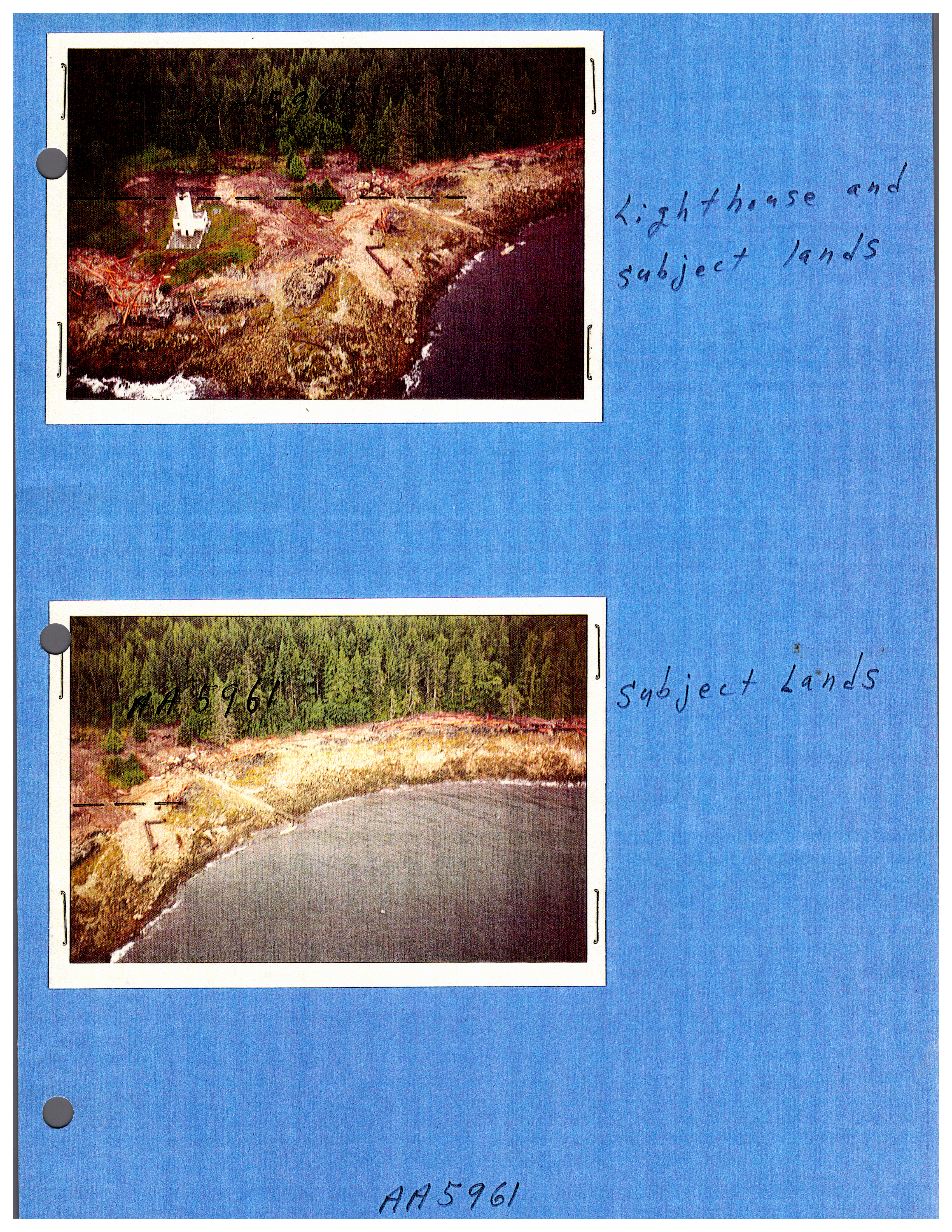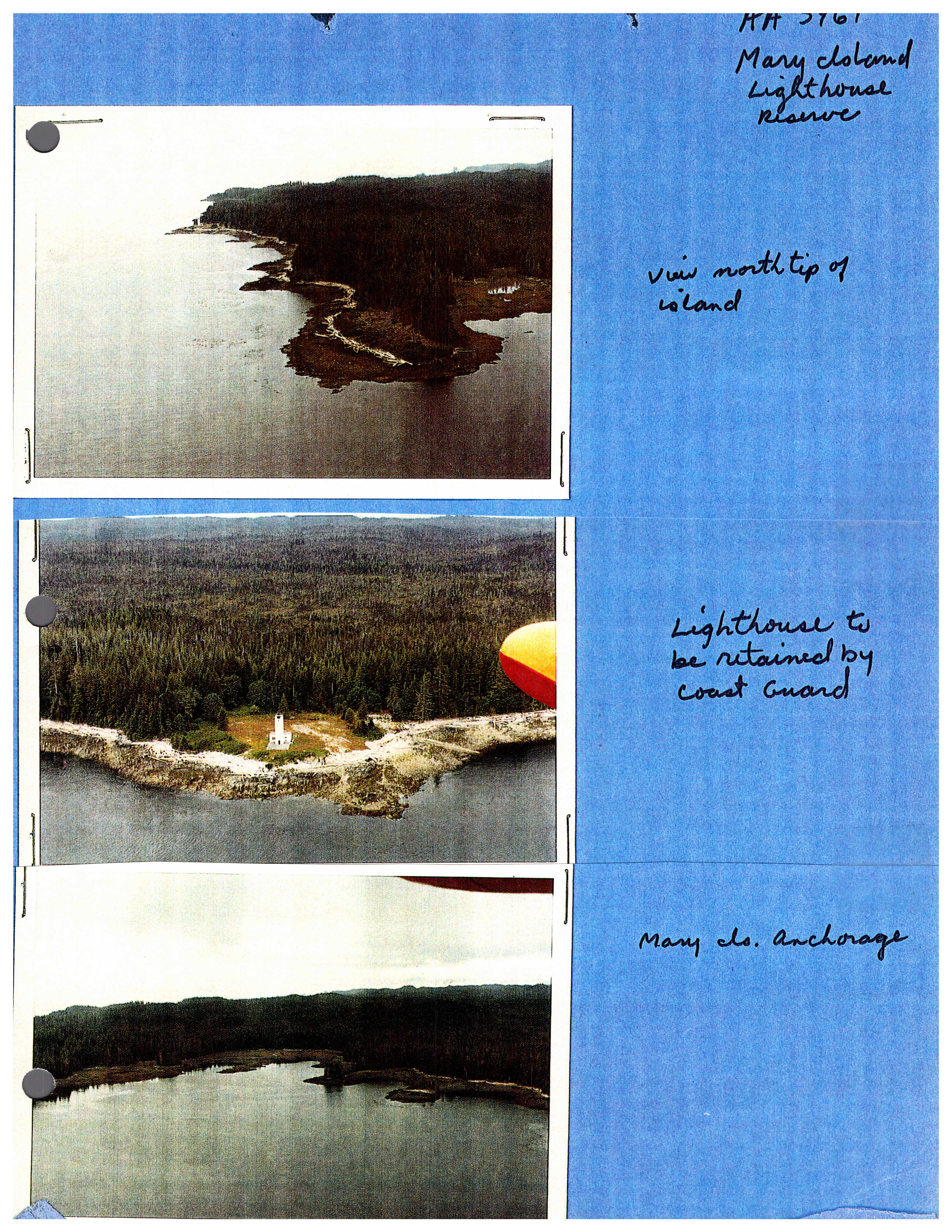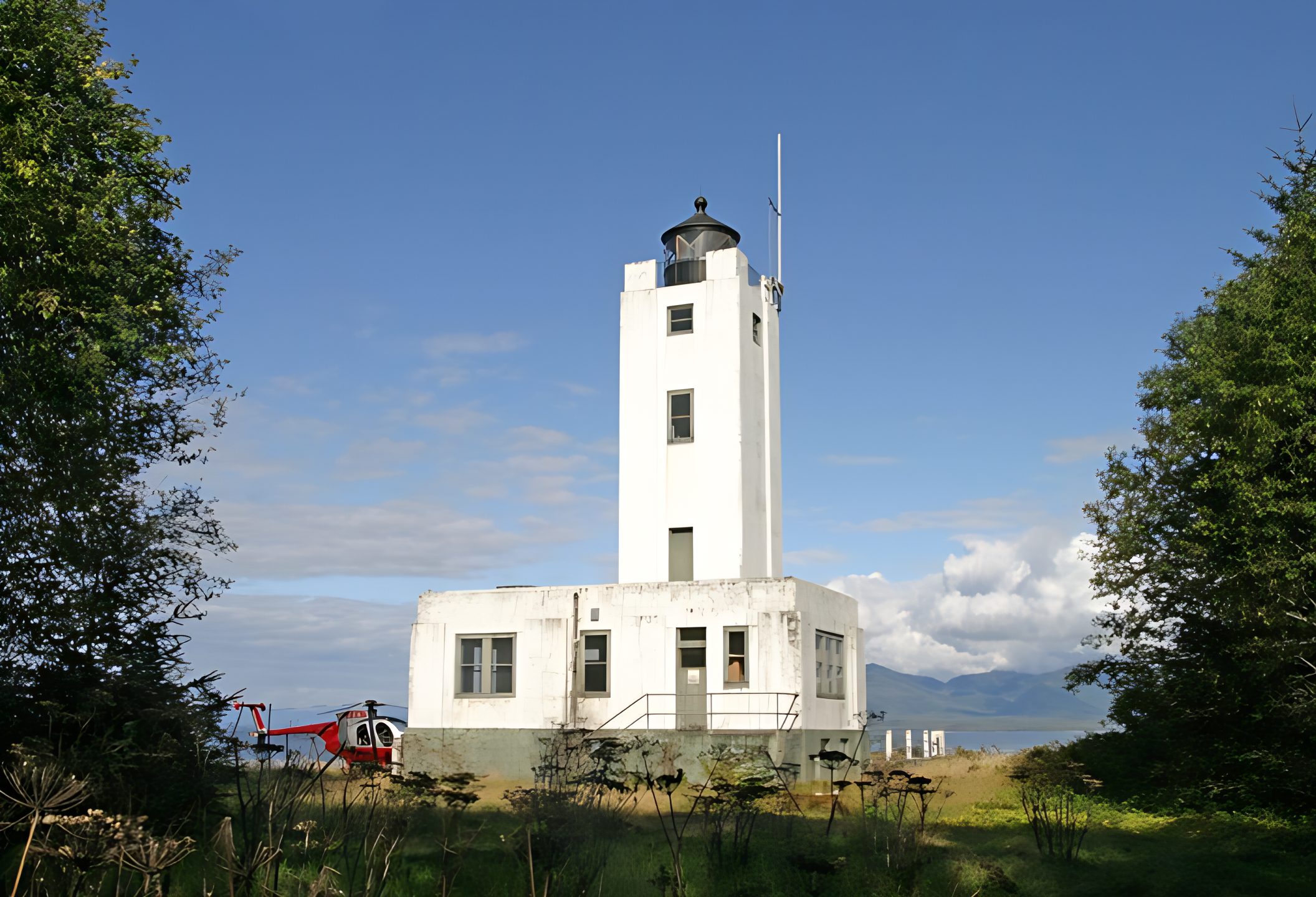Before Alaska was American
The history of Alaskan lighthouses predates the Seward purchase: the Russians erected a light at Sitka, in Baranof Castle (located on Castle Hill); this light was found unnecessary by the Lighthouse Service and discontinued, but was taken over by the army and maintained by them until 1877. The first American lighthouses in the state were erected in 1902 but most early lights were rebuilt before 1940 in a distinctive Art Deco style; the only surviving building from the earlier group is the Eldred Rock Light The last constructed were replacements for the lights on Unimak Island in 1950.
Alaska has the northernmost and westernmost lighthouses in the United States,and some of the most isolated as well. Keepers at the Cape Sarichef and Scotch Cap Lights on Unimak Island in the Aleutians were not permitted to bring their families to the station, and served four years before getting an entire year of leave; Cape Sarichef received no supplies from August 1912 to June 1913, and both lights shut down in the winter due to sea ice. Scotch Cap was also the site of the worst lighthouse disaster in US history, when it was destroyed by a tsunami in the 1946 Aleutian Islands earthquake, killing all five coastguardmen stationed there.

Mary Island Lighthouse has a special place in heart of Dan Foote, one of the enthousiasts and history keepers of Alaska Lighthouses.
Located roughly twenty-five miles south of Ketchikan and about the same distance north of the Canadian border, was named for Admiral John A.Winslow’s daughter, who cruised past the island with her father in 1872 aboard the U.S.S. Sarnac. In 1890, the Lighthouse Board requested funds for a lighthouse and fog signal on Mary Island, after providing the following justification:
The commerce of Alaskan waters is rapidly increasing. Ship masters and vessel owners have petitioned for the establishment of a lighthouse and fog-signal at this point. But little is known of the character of the ground and of the building facilities there, but it is estimated, after a study of what is known, that a light-house and fog-signal can be established there at a cost not exceeding $80,000, and it is recommended that an appropriation of this amount be made therefor.
The U.S. Government established a customs house on the island in 1891, making it the first stopping place for those sailing into Alaska from Canada. With the island now inhabited, the Lighthouse Board changed its plans and proposed that one of the custom-house employees maintain a “small, inexpensive light” on Mary Island, reasoning that the light could be built and maintained for a year for just $800. Congress failed to act on the recommendation, and so it wasn’t until the Klondike gold rush of 1897-98 created a dramatic spike in maritime traffic that serious attention was given to providing aids to navigation for Alaska.
In 1899, $300,000 was requested for the establishment of eleven light stations in Alaska, one of which was to be located on Mary Island.
As sufficient funds were not received, requests for additional capital were made the following two years as well. Alaska’s first two lighthouses built by the United States were completed in March 1902 at Sentinel Island and Five Fingers Island. In May of that same year, contractors R.M. Henningsen and Thorvald Olsen off-loaded materials near the northeastern end of Mary Island, and construction commenced on what would become Alaska’s fourth lighthouse. The foundation was completed around the first of October, and work continued through the end of the following July, though the light was actually lit for the first time on July 15, 1903.
Original Mary Island Lighthouse
According to the terms of the contract, the station was to have been completed by the end of 1902, but progress was slower than expected. The Mining Journal noted on September 6, 1902, that the delay was mainly due to “a change of site ordered by the department after the contractor had succeeded in landing most of his material at the point originally selected.” Point Winslow was apparently the site first selected, but the station was moved about a mile southeast to Cross Point.
The lighthouse consisted of an octagonal, one-story building with a smaller octagonal tower extending from its center to a height of nearly fifty feet. The black cylindrical lantern room atop the tower housed a fourth-order Chance Brothers Fresnel lens that beamed forth a fixed white light at a focal plane of sixty-seven feet above the water.
Protruding from the eastern face of the lighthouse, towards Revillagigedo Channel, was a Daboll trumpet, which served as the station’s fog signal. A pair of galvanized-iron oil houses were placed forty-feet west of the lighthouse, while two one-and-a-half story frame dwellings were built an additional sixty feet farther west. A boathouse and boat launch were also provided to facilitate access to the station. As the customs house was relocated to Ketchikan in 1900, the keepers and their families had the island practically to themselves.
In a cost-saving measure, individuals and organizations were invited to apply for long-term leases on several lighthouses in Southeast Alaska. The Coast Guard would still be responsible for the light, but all other maintenance would fall to the lessee. Dan Foote, a former coastguardsman, was awarded Mary Island Lighthouse in May 1997. He planned to operate a bed and breakfast on the property, but later found out that while the lighthouse was on Coast Guard property, the land directly west of the lighthouse, where the keeper’s dwellings once stood, was now U.S. Forest Service property. When the Forest Service refused to lease Foote the land, he was forced to abandon the project.
In 2005, the Fresnel Lens from Mary Island Lighthouse was on display as part of a shipwreck exhibit at the Juneau-Douglas Museum. While the lens appears to be in great condition, the lighthouse on Mary Island is showing signs of neglect. The lack of outbuildings and difficulty of landing at Mary Island, coupled with its remoteness, are all obstacles that must be overcome by anyone who decides to inherit the lighthouse. Hopefully, an ambitious individual or organization will step forward and keep the lighthouse proudly standing watch over the southern entrance to Ketchikan, Alaska’s first city.
From Dan Foote Personal Archive
At Mary Island
About Us
Lighthouses are a beacon. Properly used, they’re a beacon of hope to ward off impending danger, yet protecting from and warning of danger is exactly what they’re for.
The earliest lighthouses go back to biblical times, all with a mission to protect mariners. Navigating boats & ships safely means that aids to navigation had to be used to warn of the rocks & shoals, the sudden changes of seascape, and other hazards that prevented safe passage.
The lighthouses of Alaska, which you’ll find in this site, are testament to the challenges of marine navigation, life along the coast of Alaska, and the inherent dangers that can swell up and crush a concrete structure in moments, witness Scotch Gap. Yet for the many lives that have been lost, the lives saved because of these amazing aids to navigation can barely be quantified. We hope you enjoy our site.
Alaska History is Waiting








